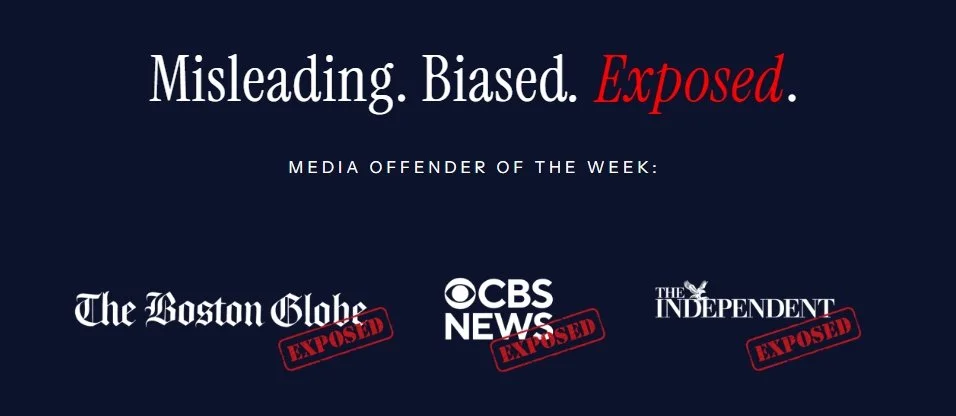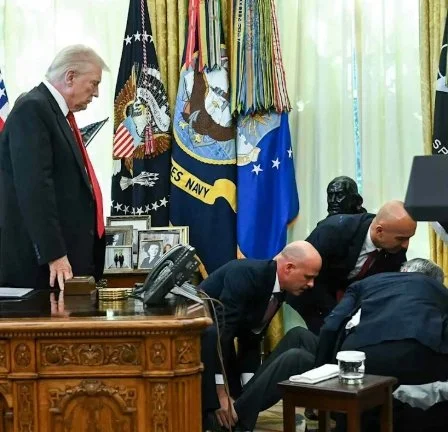From Ship Money to Schedule F: Echoes of the English Civil War in Trump’s 2025 Presidency
The causes of the English Civil War (1642–1651) are often taught as a clash between monarchy and Parliament, faith and power, absolutism and constitutionalism. Yet those causes were not sudden; they were the culmination of years of tension, made volatile by a monarch who increasingly governed without consensus. Similarly, in 2025, the United States is witnessing a controversial consolidation of executive power under President Donald Trump, in his second term. While the two political systems are vastly different in context, structure, and historical consequence, the pattern of conflict, between executive authority and legislative control, between centralized decision-making and institutional norms—resonates in both. By comparing the lead-up to the English Civil War with Trump’s early 2025 decisions, we uncover structural parallels that illuminate how democracies or proto-democracies can drift toward constitutional crisis.
Key Takeaways
Central Parallel: Both Charles I in pre–Civil War England and Donald Trump in 2025 expanded executive authority at the expense of legislative oversight, raising fears of unconstitutional rule.
Legislative Bypass: Charles used mechanisms like ship money and personal rule; Trump is using budget rescissions, executive orders, and proposed impoundment to bypass Congress.
Administrative Power: Charles appointed loyalists to key offices; Trump reinstated Schedule F to convert thousands of civil servants into political appointees, reducing institutional independence.
Cultural Mobilization: Charles's Laudian reforms ignited religious unrest; Trump’s Religious Liberty Commission has been accused of embedding Christian nationalist ideals into government.
Security and Crisis Framing: Both leaders used real or perceived threats (invasion, rebellion, border crisis) to justify expanding unilateral executive power.
Escalation Risk: Just as Charles’s failed arrest of MPs catalyzed war, similar flashpoints (e.g., ignored court rulings or defiance from state governors) could push the U.S. toward deeper constitutional crisis.
Modern Guardrails: Unlike Stuart England, the U.S. has a written constitution, judicial review, and stronger institutional checks—though these are now under strain.
Executive Power vs. Legislative Sovereignty
One of the most direct parallels between the English Civil War and current U.S. tensions lies in the struggle over institutional supremacy. In 1629, King Charles I dissolved Parliament and began his “Personal Rule,” an eleven-year period in which he governed without consulting the nation’s elected representatives. During this time, Charles raised funds through extraparliamentary means such as forced loans and “ship money,” a levy traditionally confined to coastal towns during times of war but controversially expanded to inland counties.
Fast forward to 2025: Donald Trump’s return to the presidency has included a wave of executive orders and budgetary manoeuvres that largely bypass Congressional input. Chief among these was the $9.3 billion rescission package within his “DOGE” (Department of Government Efficiency) budget initiative. More controversially, Trump has revived talk of restoring the “impoundment authority” that allows the president to withhold funds appropriated by Congress, though true impoundment power would require Congress to change the 1974 Budget Act. Though largely symbolic so far, this suggestion echoes practices that were curtailed during the Nixon administration which has sparked bipartisan concern over the erosion of Congress’s constitutional power of the purse.
The echo here is not in the identical use of mechanisms, Charles used royal prerogatives; Trump uses modern executive orders and budget tools, but in the outcome: a steady shift of decision-making away from a pluralistic legislative body to the hands of one individual. In both cases, executive overreach, even when technically legal, destabilizes the foundational balance of power.
The Weaponization of the Bureaucracy
In the 1630s, Charles increasingly filled government offices with his loyalists, frustrating the gentry and professional classes who were denied influence. His appointment of Archbishop William Laud, a man closely associated with high church ceremonialism, alienated Puritans and heightened the perception that Charles was constructing a state church bordering on Catholicism. Administrative appointments, in this case, were more than personnel choices, they were ideological statements and methods of control.
In a similar vein, Trump’s January 20, 2025 executive order reinstated Schedule F, a classification that allows the president to reclassify thousands of career civil servants as political appointees, effectively eliminating their job protections. Critics argue that this measure undermines the merit-based civil service and allows for the construction of a bureaucratic state loyal not to the Constitution, but to the president personally.
Both leaders used administrative control as a lever to consolidate power. And in both contexts, staffing decisions became central to constitutional conflict. Charles’s civil appointments helped ignite political opposition in the Long Parliament. Trump’s effort to transform the executive branch into a loyalist infrastructure has triggered investigations and oversight hearings. The stakes are not merely bureaucratic; they speak to the neutrality of the state apparatus itself.
Religion and the Mobilization of Cultural Identity
Another major source of tension in Stuart England was religion. Charles’s enforcement of Laudian reforms and his attempt to impose an Anglican prayer book on Presbyterian Scotland provoked violent rebellion in 1639, culminating in the Bishops’ Wars. These religious reforms were viewed not just as spiritual intrusions but as assaults on English and Scottish national identity, turning cultural difference into political opposition.
In 2025, Trump has invoked cultural and religious identity as part of his governing strategy. On May 1, he signed an executive order establishing a “Religious Liberty Commission,” stacked with evangelical leaders, and tasked with reviewing federal policies through the lens of religious freedoms. Civil rights groups have decried the move as a veiled attempt to codify Christian nationalist priorities in federal governance. Just as Laudian reforms galvanized the Puritans and led moderates to question Charles’s intentions, Trump’s religious initiatives have mobilized both his base and his critics, turning cultural anxieties into constitutional ones.
The parallel here is not one of identical religious content—17th-century England’s Protestant-Catholic axis is not today’s church-state separation debate, but of function. Religion becomes a vehicle for political mobilization, one that frames constitutional grievances in moral terms and deepens polarization.
The Role of Security Crises
Both Charles I and Donald Trump have invoked national emergencies to justify controversial decisions. Charles faced real threats from the Scots and Irish; he claimed emergency powers to raise armies and collect revenue without parliamentary consent. The threat was genuine, but so was the constitutional overreach.
Similarly, Trump has cast immigration as a national security emergency. His first executive orders in 2025 dramatically expanded expedited removal procedures and enabled mass deportations without due process, despite push back from the Supreme Court. Although such actions are framed as law enforcement priorities, they have alarmed civil liberties organizations, many of whom argue that such policies undermine constitutional protections for citizens and immigrants alike.
In both cases, the executive uses emergency framing to justify exceptional action. Whether in the form of foreign invasion or domestic “infiltration,” security threats allow for the temporary suspension or permanent weakening of institutional norms.
The Political Spiral
The breakdown in 17th-century England did not happen overnight. The escalation was slow but steady: Charles’s forced taxations prompted lawsuits; his religious reforms prompted protest; his attempts to arrest five members of Parliament in 1642 was the final catalyst for war. The political temperature had risen past the point of return.
In 2025, a similar spiral appears possible. The House Judiciary Committee has opened oversight hearings into Schedule F. Senate moderates are drafting legislation to block any attempt to revive impoundment. Federal judges have begun issuing injunctions against certain immigration orders. The rhetoric surrounding these actions is escalating: terms like “dictator,” “coup,” and “imperial presidency” have become common on both sides of the aisle. Though no guns have been drawn, the institutional standoff is deepening.
What happens if a court ruling is ignored? Or if a state refuses to enforce federal deportation mandates? What happens if Congress tries to defund Schedule F agencies and the White House vetoes the effort? These questions are no longer hypothetical. They echo the same dynamics that turned institutional friction in the 1640s into open conflict.
Where the Parallel Ends
Of course, key differences remain. The United States operates under a written Constitution with a well-established judiciary. Elections occur on fixed dates. The military is professionally apolitical. In contrast, 17th-century England had no formal constitution, no independent judiciary, and a militia system that answered to local elites. These institutional guardrails could prevent the U.S. from descending into civil war, even if the constitutional crisis continues to escalate.
Moreover, modern public opinion, shaped instantly through mass media, plays a more dynamic role than 17th-century pamphleteering. Political polarization can intensify far more quickly but so can backlash, legal response, and protest. The structure of U.S. federalism also provides more outlets for dissent and adaptation than the centralized monarchy of Charles I’s England.
Simply Put
History does not repeat itself, but it often rhymes. The current political trajectory in the United States shares unsettling similarities with the events that led to the English Civil War. In both cases, long-simmering institutional conflicts have been brought to a boil by a powerful executive bent on bypassing checks and balances. Whether through budgetary end-runs, religious-cultural mobilization, or administrative overhauls, the center of power is shifting. Whether that shift can be rebalanced within the boundaries of law or whether it spirals into open rupture—remains to be seen. But the lesson from 1642 is clear: once the bond of trust between representative institutions and executive authority breaks, it is very difficult to repair. The United States is not yet at that point, but the historical echoes are growing louder.
References
Coward, B. (2003). The Stuart Age: England, 1603–1714 (4th ed.). Pearson Education.
Bond, S. (2025, April 18). Trump removes civil service protections with Schedule F plan : NPR
McIlwain, C. H. (1947). The Political Works of James I. Harvard University Press.
Pincus, S. C. A. (2009). 1688: The First Modern Revolution. Yale University Press.










